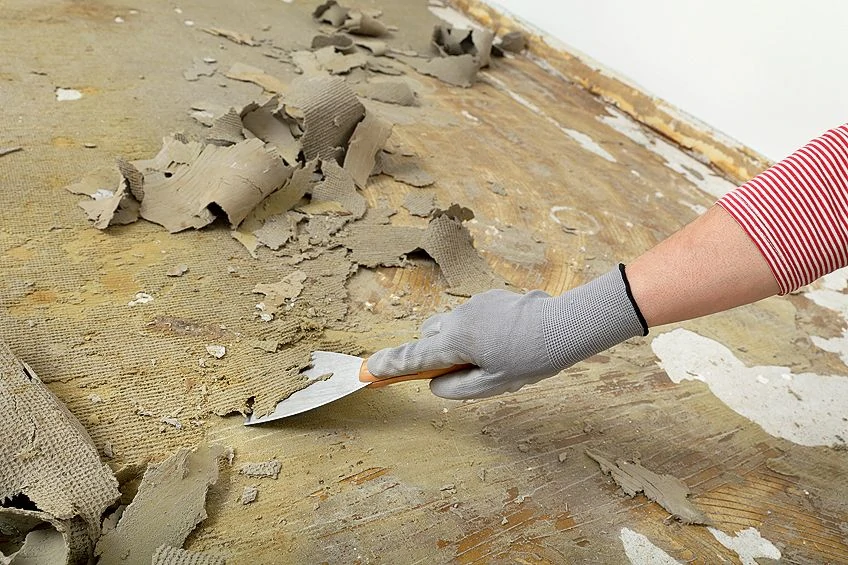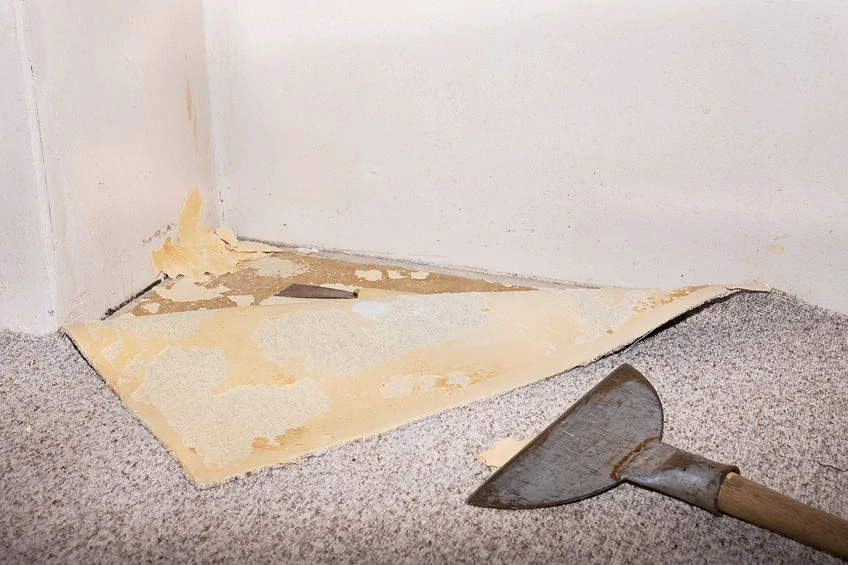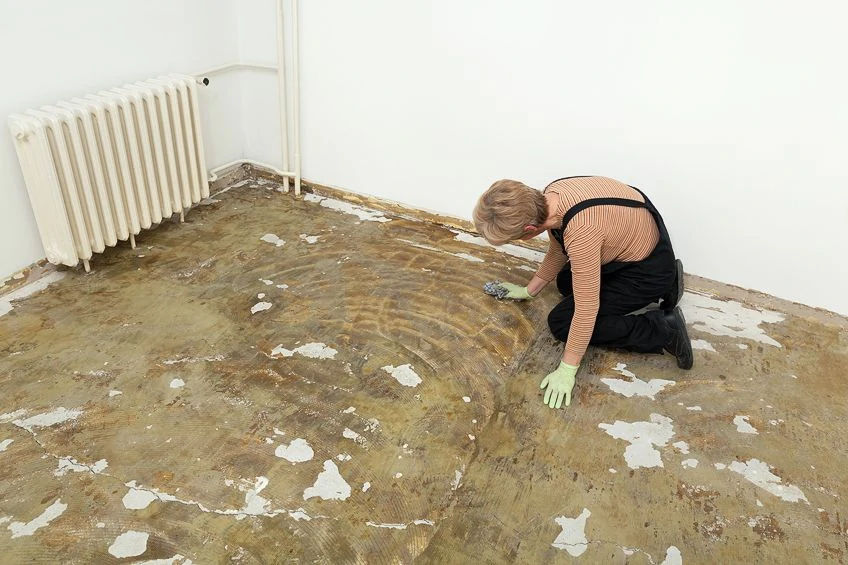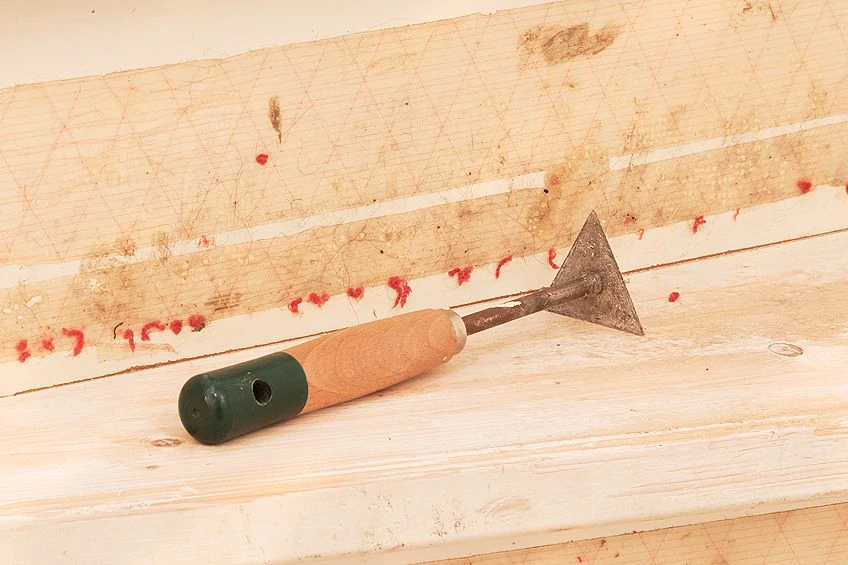How to Remove Carpet Glue – Complete Removal Guide
This post may contain affiliate links. We may earn a small commission from purchases made through them, at no additional cost to you. You help to support resin-expert.com
Carpet adhesives are formulated to put up with years of scuffing, trampling, and footfalls. When ripping up your old carpets to lay down new flooring, you may be disappointed to find residual carpet glue clinging to your subfloor. These adhesives seldom fail, but it is for this reason that carpet glue can be extremely difficult to remove from a concrete subfloor. This article shares the most effective methods for removing carpet glue from concrete safely.
What Is Carpet Glue?
Gluing a carpet down is an ideal, long-term option for wall-to-wall carpeting. Some carpeting comes with adhesive backing and others require you to apply the glue between the subfloor and carpet. The latter is usually spread with a trowel or similar tool and comes in a variety of different types. In recent times, we have seen the rise of eco-friendly carpet adhesives, which usually come with an acrylic or synthetic rubber base.
It is important to note that if your carpet was installed before the 1980s, there is a good chance that the adhesive may contain asbestos. Asbestos is carcinogenic, thus extreme care needs to be taken when removing it. This is why you should call a professional if you are unsure of the nature of the glue beneath your carpet.
Methods of Removal
There are a number of methods for removing carpet glue from concrete. The following methods are presented from the most DIY-friendly to the least accessible and most difficult. Some of the methods require just a bit of elbow grease where others require the use of harsh chemicals. It is advised that you try the first method and then move on to the subsequent methods only if necessary. By doing this, you can avoid spending money needlessly and avoid exposing yourself to toxic chemicals.
Scraping
A quality scraping tool can go a long way in removing carpet glue from concrete. A paint scraper is ideal, although a five-in-one tool or a spackling knife will work just as well. A long-handled floor scraper will keep you off the ground, but if you do not have one, it is advised that you use knee pads as a few hours of scraping with a short-handled scraper can be torture on the joints.
A pair of quality work gloves will prevent blisters and increase your grip on the scraper. Use a broom to sweep away the dried bits of glue before moving onto the next method. You may be able to remove all the glue with a scraper, but this will depend largely on the condition of the concrete and the strength of the glue. More porous concrete may require you to use hot water or solvents.
If the glue is proving to be stubborn, use this scraping technique in conjunction with the following method.
Boiling Water
If the glue is very old, it may have started to break down and loosen its grip on the surface of the concrete. You can further persuade it with a bit of hot water. Boiling a small pot of water on the stove and pouring it onto the affected areas can help lift the glue from the surface of the concrete.
It is important to take care when pouring hot water onto the concrete. To avoid excessive splashback, pour the water from a short distance as opposed to a dizzying height. It is also advised that you wear a pair of rubber gloves and rain boots. This will protect you from the scalding splashback.
For the best results, lay a towel over the glued area of concrete and pour the hot water onto the towel, letting it sit for two to three minutes. The towel will retain some of the heat, thus increasing the efficacy of this method. Lift the towel and remove it from the area, after which you can begin removing the glue with your scraper.
Whether or not you are using a towel, it is advised that you work on one small area at a time rather than pouring hot water over the entire floor. If you opt for the latter, you will more than likely find that by the time you get to the other end of the floor with your scraper, the water would have cooled down and will not be effective anymore.
Ironing
An alternative to using boiling water is to use an iron. The rule of thumb here is that warm glue is easier to remove than cold glue. Lay a single sheet of newspaper down on the affected area of concrete and then run the hot iron over the newspaper until it is hot to the touch. Remove the newspaper and begin scraping before the glue has a chance to cool down.
You may have to repeat this procedure multiple times, especially when dealing with a large area of concrete. Needless to say, always be careful when using a hot iron as it can burn your skin.
A heat gun is an alternative that can also be effective in softening the glue to make it easier to remove. Heat the glue directly with the heat gun until it softens, and then scrape the glue to remove it. Address one small area at a time to avoid the glue cooling down and returning to its stubborn state.
Ammonia and Detergent
Ammonia is an extremely strong chemical that can be effective in removing glue from concrete, but it should be diluted with water first. Mix two cups of ammonia and a few generous squirts of dishwashing detergent into a bucket of warm water. It is important to wear goggles, rubber gloves, and a respirator when dealing with ammonia, as it can give off toxic fumes.
Use a coarse bristle brush to scrub the area of concrete to remove the residual glue. The ammonia and soap solution will soften the glue and allow it to lift from the concrete. Wipe the concrete with a cloth and continue applying the solution and scrubbing until all the glue is removed. It is advised that you rinse the concrete with a mop and fresh water after the glue has been removed.
Acetone
If you have tried the above methods and are still having trouble, you may have to bring out the big guns. Acetone is advised to begin with, but solvents such as paint thinner and turpentine can also be very effective when trying to remove carpet glue from concrete. Acetone is flammable and can give off toxic vapors, so be sure to wear a respirator to avoid breathing in any noxious fumes. You should also wear safety goggles and put on some gloves to prevent the solvent from drying out your hands.
For this method, a coarse bristle brush will work better than a scraper. Pour a quarter of a cup of acetone into a tray to make it easy to work with. Dip the brush into the solvent and begin to scrub the concrete. The acetone should melt the residual glue and, in doing so, lift it from the concrete. The brush will help work the glue off of the surface. Use a clean cloth to wipe the surface and repeat if necessary. If you are dealing with a very small area, you can use an old toothbrush instead of a scrubbing brush.
Sanding
If you are dealing with extremely stubborn glue or glue stains, you may be tempted to try a more abrasive technique. One option is to hire an industrial floor sander, which is ideal if you want to avoid hiring a professional. The cheapest DIY option is to use an angle coupled with a diamond cup wheel.
Whichever machine you choose, be aware that it is not as DIY-friendly as the aforementioned methods. However, for someone with a bit of experience, using a floor sander or angle grinder should be fairly easy.
When attempting to sand or grind glue from concrete, it is advised that you wear the appropriate safety gear such as goggles, gloves, and a dust mask or respirator. Full-coverage clothing is also advised. When sanding, be careful not to focus too much on one area of concrete, as this can create an uneven surface that may require you to cough up money for repairs. Move over the surface of the concrete lightly at first, and increase the pressure as needed.
Tips and Tricks
- Always remember that heating the glue will make it a lot easier to remove. As the glue cools down again, it becomes tough and is more difficult to remove, so be sure to address a small area at a time.
- WD-40 can also be effective in removing carpet glue from concrete flooring. Simply spray some DW-40 on the affected area and let sit for about 30 minutes. You may find that it softens the glue and makes it easier to remove with a scraper or a hard-bristled brush.
- A great way to speed up the scraping process and to make it a bit easier is to use a reciprocating saw with a scraper attachment. When using a scraper blade on a reciprocating saw, make sure that the bevel edge faces upward and the flat edge faces down.
- Whether you are using hot water, solvents, or a specialized adhesive remover, it is advised that you wait a few minutes after applying it to the affected area before you begin scraping or scrubbing. This will allow some time for the glue to soften – be patient.
- Contrary to the aforementioned techniques of heating the glue to make it easier to remove, one can also use dry ice. Subjecting the adhesive to dry ice can make it brittle and thus easier to remove with a scraper. This technique should be attempted with caution, however. Place the dry ice on a baking sheet and place it on top of the area of concern for a few minutes before attempting to scrape away the glue.
- When choosing a mastic or glue remover, it is best to read the manufacturer’s instructions to make sure that the product is suitable for the surface you are dealing with. It is best to test the glue remover on an area that is out of sight to see if it works first before applying it to the whole surface and causing damage.
There are many ways to remove glue from a concrete floor. Some of them are more effective than others, but it is important to start with the non-toxic, less expensive methods first, and to only bring out the big guns when you continue to have trouble removing the adhesive. Always remember to follow the manufacturer’s safety guidelines when dealing with harmful chemicals.
Frequently Asked Questions
How to Remove Carpet Adhesive from a Wood Floor?
Care needs to be taken when using a scraper to remove carpet glue from a wooden floor, as it is easy to accidentally gouge out chunks of wood. The same applies if you have decided to hire a floor sander – work slowly and carefully to avoid damaging the underlying floor.
Will Denatured Alcohol Remove Carpet Glue?
Denatured alcohol can be very effective in softening and removing carpet glue from concrete. It can be used in the same way as the method we describe above that suggests using acetone. Denatured alcohol is toxic and flammable, however, so make sure that you wear gloves, goggles, and a respirator when working with it.
Why Should I Remove Old Carpet Glue?
Apart from looking terrible, old carpet glue can become a magnet for dust, dirt, and grime, and can also become a nuisance when laying down new carpets or laminate flooring. Old adhesives can hinder the adhesion of new flooring and can create an uneven surface area, which is less than desirable.
When Should I Call a Professional?
Removing old carpet glue from concrete can require a lot of effort and is very time-consuming. However, your persistence with the above methods will pay off. If you are still struggling to remove the adhesive from your concrete floor and do not feel confident enough to use abrasive techniques, then it is advised that you call a professional carpet removal service.
Can I Remove Asbestos Carpet Glue Myself?
Asbestos was a widely used building material from the early 1900s onwards, but exposure to the substance has since been linked to respiratory problems. This is especially so in the case of asbestos removal or demolitions, as they cause asbestos particles to become airborne, which can then be inhaled. Thus, it is highly recommended that you call a professional if you are unsure about the nature of the adhesive under your carpeting.





